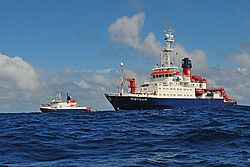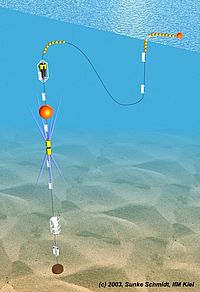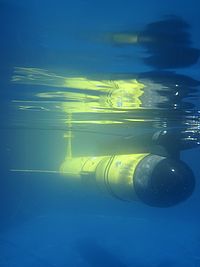The basis of oceanographic research is the measurement of physical, chemical and biological parameters. Until a few decades ago it was necessary for ships to sail to the site of scientific interest and take in situ measurements. This was and is very time-consuming, laborious and costly. The technical development of electronics, sensors and computers has led to rapid change, especially in recent years.
Since the 1950s, oceanographers have used moored instrumentation to autonomously record measurements over a period of up to 3 years. The data could then only be analyzed after recovery of the mooring. Satellite measurements have provided a major leap forward since the 1970s where large portions of the ocean can be surveyed in a short amount of time, and the data became available for further analysis within minutes or hours. Unfortunately, many of the oceanographic parameters of interest are not accessible by satellites, and the interior of the ocean remains largely hidden from a satellite’s view. In the last ten years, there have been huge advances in satellite-linked phones, high-performance and energy-saving microelectronics and new materials which enabled the development of a new generation of oceanographic instrumentation. For example, floats and gliders measure independently for months and years, drifting with the ocean currents, or sailing along predetermined courses. They are capable of sending their data at regular intervals via satellite to a land-based receiving station.





